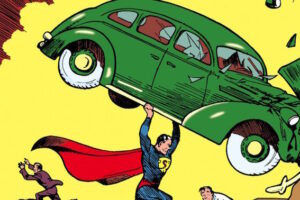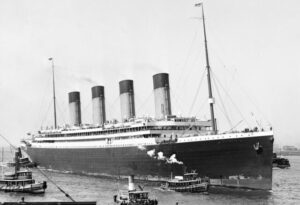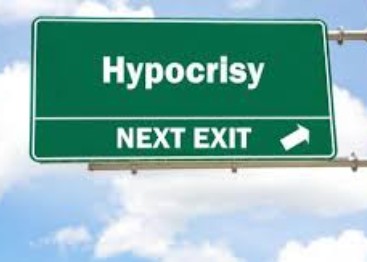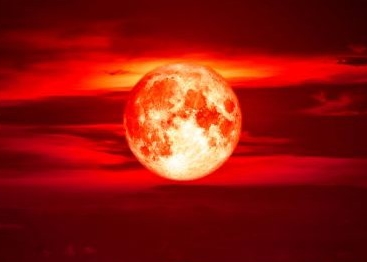10 Things That Disappeared Faster Than You’d Expect
It’s easy to look back at history and judge it through the lens of the present. We often impose our modern values, opinions, and perspectives onto events that happened in a completely different time and place. But here’s the thing: understanding the past isn’t just about knowing what happened—it’s about grasping how it happened, and why it mattered to the people living through it. And one of the biggest mistakes we make is assuming that historical events unfolded at the same pace we’re used to in our fast-paced, modern world. Spoiler alert: they didn’t.
Take iconic moments or movements, for example. When we think of them, we often imagine grand, sweeping changes that took years or even decades to unfold. But the truth is, many of these events happened much faster than we realize. A revolution, a cultural shift, or a groundbreaking invention might seem like it took forever when we read about it in textbooks, but in reality, it could have been a whirlwind of activity compressed into a surprisingly short time frame. We tend to overlook this because we’re so focused on the impact of these events—how they shaped politics, culture, or society—that we forget to consider the pace at which they occurred.
This skewed perspective can lead to some serious misunderstandings. For instance, we might romanticize the past, imagining it as a slower, simpler time. But for the people living through it, life might have felt just as chaotic and fast-moving as ours does today. On the flip side, we might underestimate how quickly certain changes took place, assuming that progress always happens at a snail’s pace. In reality, history is full of moments where everything seemed to change overnight.
Ask yourself: How long did this really take? What did it feel like to live through it? And how much of what I “know” is shaped by my own time and place? It’s a fascinating exercise, and it might just change the way you see history—not as a static collection of facts, but as a dynamic, unpredictable, and often surprising story. After all, the past wasn’t just a prelude to the present; it was a world all its own, full of people who had no idea how their actions would be remembered—or misunderstood—by future generations.
10.It Took Just Over a Year to Build the Empire State Building

When we think about modern construction projects, one thing comes to mind: they take forever. The Burj Khalifa, the world’s tallest building, took six years to complete. The Willis Tower (formerly the Sears Tower) needed three years, and Canada’s CN Tower took just over three years as well. But then there’s the Empire State Building—one of the most iconic structures in American history. Believe it or not, it was built in just one year and 45 days. Yes, you read that right.
To put that into perspective, the construction of the Empire State Building required over seven million man-hours. If you break that down into an 8-hour workday, it’s equivalent to 875,000 man-days—or roughly 2,397 years of work for a single person. But since it was completed in just over a year, it’s clear that thousands of people were working on it simultaneously. And let’s not forget, they weren’t exactly clocking out at 5 PM every day.
When construction began, around 3,000 workers were on the job. They managed to build an astonishing 4.5 floors per week. Compare that to the Burj Khalifa, which had a team of 12,000 workers and took six years to complete—despite being only about twice as tall as the Empire State Building. It makes you wonder: did they just work harder back then, or was it something else?
What’s even more fascinating is how this feat was achieved without the advanced technology we have today. No drones, no 3D modeling, just sheer manpower, determination, and a lot of steel. The Empire State Building wasn’t just a construction project; it was a statement. It showed what humans could accomplish when they set their minds to something.
9.A Day Only Lasted 10 Hours Or Less Billions of Years Ago

Thanks to a fairly accepted standard of time around the world, almost everyone agrees that a day has pretty much 24 hours in it. We won’t worry about the minutiae of lost minutes and seconds that we need to round up or down. That’s how modern time works, however. Back in the past, a day might have only been 10 to 12 hours long.
The concept of a day is a human construct to account for the rotation of the earth. Most people have this concept challenged for the first time when they watch science fiction and the writers choose to take into account the size difference of planets or how fast they might spin. Even in our solar system, none of the other planets have a day that lasts 24 hours. Sure, a day on Mars is only 25 hours, so that’s pretty close. On the other hand, a day on Venus is 5,832 hours.
If you took a time machine back to Earth 4.5 billion years in the past, and hopefully you were able to survive being exposed to the world the way it was back then, you find yourself enjoying 10-hour days. The Earth spun a lot faster back then. When the moon first came into orbit days were only about four hours long.
You can thank the moon for dragging us down and slowing the planet over time. The gravitational pull of the moon and the effect on the tides have been making days longer on our planet ever since. It happens a fraction of a second per year, however. In another few billion years, if the planet is still around, a day might be 40 hours long.
8.Apollo 11 Only Took 8 Days
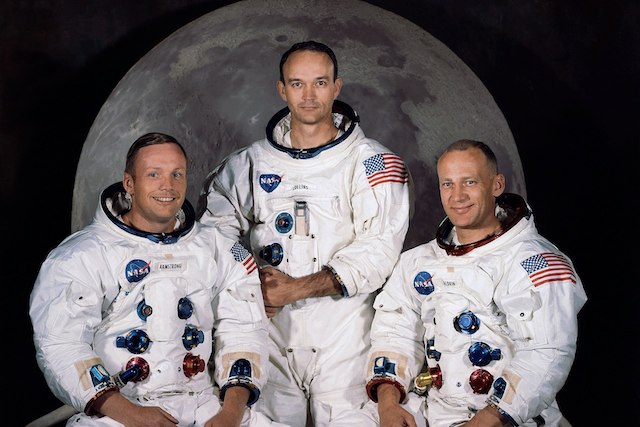
If you had to pick one of humanity’s greatest achievements, landing on the moon would definitely be near the top of the list. Think about it: we left the planet we call home and set foot on another celestial body. That’s a pretty big deal—way more impressive than, say, inventing the Segway.
Even though it happened over 50 years ago, in 1969, we still haven’t topped it. Sure, we’re talking about going to Mars one day, but that’s still in the future. For now, the moon remains the farthest place humans have ever traveled.
But here’s something that might surprise you: while the moon is the furthest we’ve gone, it wasn’t the longest trip we’ve ever taken. The Apollo 11 mission, which carried Neil Armstrong, Buzz Aldrin, and the rest of the crew to the moon and back, took just eight days. There’s even a documentary about it called 8 Days: To The Moon and Back—because, honestly, that’s a shockingly short time for such a monumental journey. To put it in perspective, some people go on Caribbean cruises that last longer than that.
Part of what makes the trip’s brevity so surprising is how close the moon actually is. We often think of space as this vast, endless expanse, but the moon is practically our next-door neighbor compared to Mars. A round trip to Mars, which is the next big goal for space exploration, is expected to take around 21 months. Suddenly, the moon feels like a quick trip to the corner store.
It’s easy to forget how groundbreaking the moon landing was, especially since it happened so long ago. But when you really stop to think about it—leaving Earth, traveling through space, and stepping onto another world—it’s nothing short of incredible. And while we’re dreaming of Mars, the moon will always be a reminder of what humanity can achieve when we aim high.
7.The Blair Witch Project Took 8 Days to Film
Twenty-five years after its release, the actors of The Blair Witch Project made headlines in 2024 when it came to light that they had made almost no money off the film despite its overwhelming success. The film has the greatest return on investment in Hollywood history at about 124,000%. The worldwide box office is just shy of $250 million and that’s not including any of the merchandising including games in the years that followed. The budget was about $60,000.
As successful as the movie was, and it managed to kick off the found footage genre in a way no other film had done before, it was only an eight-day event. The three actors in the movie essentially contributed to the creation of one of the most popular horror subgenres, made the filmmakers in the studio hundreds of millions, and were paid $500 plus a fruit basket.
6.Louis XIX Reigned for 20 Minutes

Not every ruler gets to have a dramatic tenure. Some of them are just flashes in the pan. King Louis XIX’s reign was shorter than an episode of a sitcom without commercials. His father, Charles X, had just abdicated the throne during the French Revolution. It’s said that Louis took over as Louis XIX and spent just 20 minutes considering his position during the revolution before deciding that he, too, might be better off not on the throne lest the people get a hold of him.
There is some debate about whether or not this timeline is official, or whether his father’s abdication led to Henri V taking the throne with no actual consideration given to Louis in an official capacity.
5.Julius Caesar Reigned For Less Than a Year

We’re going to play a little fast and loose with this one and talk about just how long Julius Caesar reigned as emperor. It was less than one year. For what it’s worth, Caesar had power for a much longer time and was a very influential figure. He managed to appoint himself Emperor after all, so he had to have the clout to do that in the first place. However, his official reign as Emperor was shorter than most people might think.
Most of Caesar’s legacy stems from his time before declaring himself emperor. He was a military leader, and he had conquered Gaul. When he was called back to Rome, he came back with a vengeance and famously declared war as he crossed the Rubicon River, which today is used to refer to reaching a point of no return. Caesar and his armies crossed, he destroyed his rival Pompey and took Rome. And then, in under a year, his rivals conspired to murder him and made good on their plan.
4.James Dean’s Career Only Spanned 3 Movies

James Dean went down in American cinematic history as one of the most well-known and tragic actors ever. He’s sort of the epitome of the idea of “live fast, die young, leave a good-looking corpse.” There’s a lot of Hollywood mystique wrapped up in the story of Dean, made all the more impressive when you consider that he was only in three movies before his death.
Dean was only 24 when he died. Consider the top actors of the modern era, even those considered of the younger generation, and the bulk of them are well over 24. Actors like Tom Holland, Barry Keoghan, Timothée Chalamet, and others who could be considered comparable to Dean for star power and similarity of roles (this is a vague comparison, no need to flame us in the comments) are all in their late twenties and even early thirties. Dean managed to have a huge impact a lot faster than most actors of an even greater age.
3.Antarctica Has Only Been Officially Known For 200 Years

Everyone in America knows that Columbus discovered America in 1492. They also know there were people already living here, so it’s hard to say somebody discovered it but that’s the part of history that gets glossed over a lot.
Australia was discovered in 1606, again ignoring the people who lived there for thousands of years before the so-called discovery. Marco Polo “discovered” Madagascar in 1500. Hawaii was discovered in 1778. All of these places had people there already, mind you, and they were “really” discovered thousands of years earlier if you could consider them having been discovered at all. But Antarctica? That’s another matter.
Since no one lives there, Antarctica actually did get discovered once. It officially happened in 1820. There’s a possibility the Maori visited Antarctic waters centuries earlier but, as we just saw, the history of who discovers a land is often written by whoever conquers the area and writes books about it.
Overlooking the achievements of others aside, this means we officially acknowledge Antarctica as being only about 200 years old. Pretty impressive for a chunk of land larger than Europe or the United States.
2.Sliced Bread Isn’t Even 100 Years Old

Most people have probably heard the expression “the best thing since sliced bread.” It’s a beautiful goofy way to refer to something that you think is pretty impressive by relating it to sliced bread which, for whatever reason, we all take to be a clearly intelligent innovation.
Ironically, sliced bread hasn’t been around that long. Bread has existed for at least 10,000 years and some evidence suggests 14,000 years. Of course, anyone could have been slicing their own bread for all of those thousands of years. but sliced bread that you could buy at a store? That dates back to 1928.
Otto Rohwedder rolled out the first loaves of sliced bread at the Chillicothe Baking Company in Chillicothe, Missouri in July 1928. Rohwedder was a jeweler who had gone to optometry school, not a baker, but he really fixated on the idea of having bread sliced before you bought it.
He spent years working on a machine to slice bread and suffered several setbacks before he perfected it. Naturally, as soon as it was done, everyone in the baking industry thought it was stupid. But customers loved it and sales skyrocketed. The rest is history.
1.The Confederacy Lasted Barely 4 Years
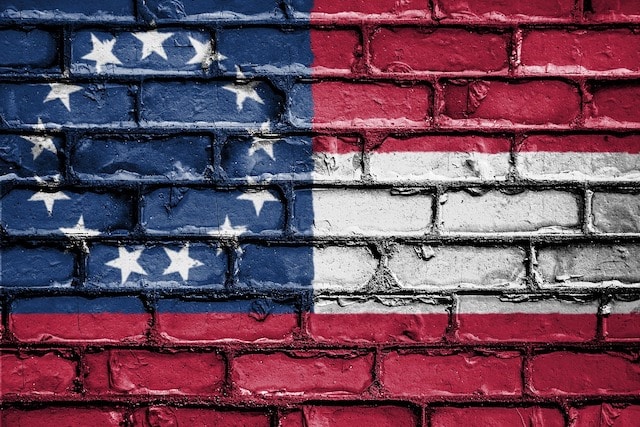
When you think about the most impactful moments in U.S. history, the Confederacy is hard to ignore. It’s tied to everything—the Civil War, slavery, iconic battles like Gettysburg, and the deep scars left on the nation. Even outside the U.S., this period is one of the most recognized chapters of American history.
But here’s something that might surprise you: for all its lasting influence, the Confederacy itself was incredibly short-lived. It lasted just four years.
It all began on February 4, 1861, when the Confederate States organized themselves, aiming to become an independent nation. By May 1865, it was over—the last army surrendered, and the Confederacy collapsed. Four years. That’s it. To put it in perspective, that’s less time than a single U.S. presidential term.
Yet, despite its brief existence, the Confederacy’s impact is still felt today. You can see it in the debates over Confederate flags, statues, and what they symbolize. For some, it’s about heritage; for others, it’s a painful reminder of a dark past. Either way, it’s astonishing how something so short-lived could leave such a long shadow.
It’s a strange paradox: a four-year period that continues to shape conversations about identity, history, and justice over 150 years later. Whether you’re studying history or just scrolling through the news, the Confederacy is a reminder that some events, no matter how brief, can echo for generations.



